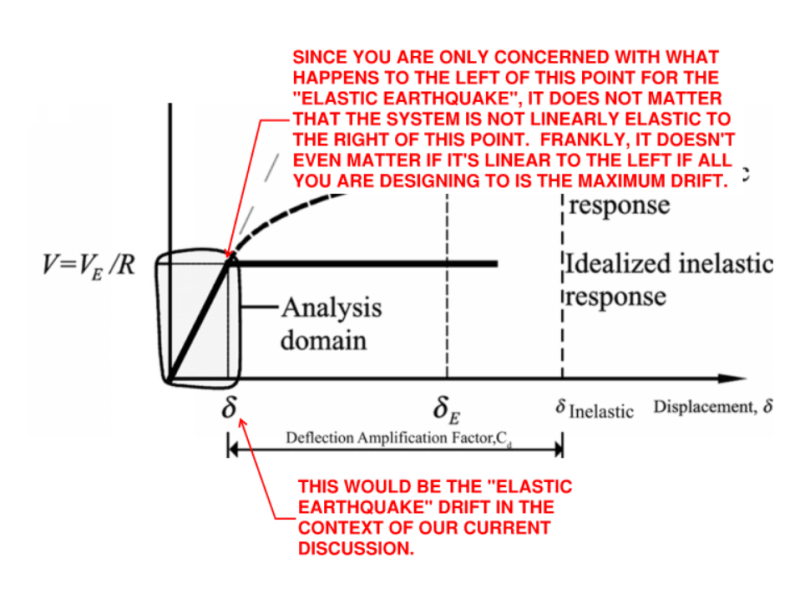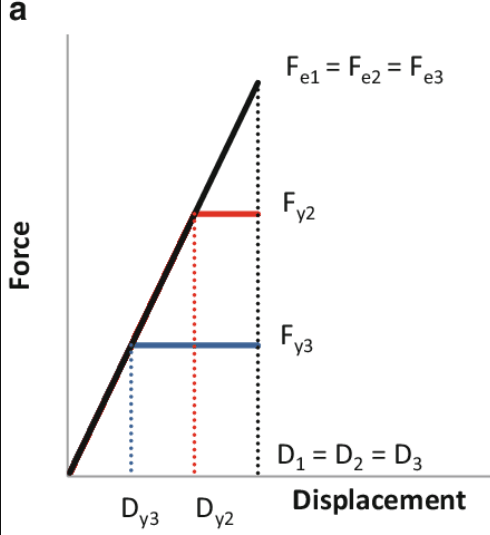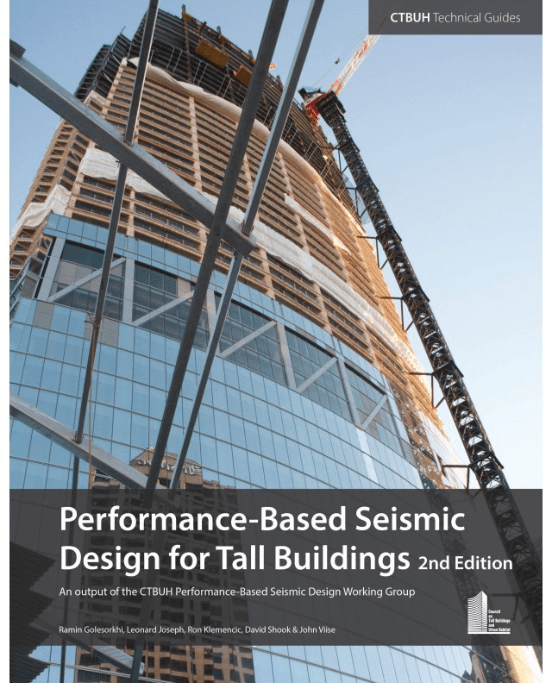CCWG
Structural
- Apr 8, 2022
- 7
A typical performance requirement for a curtain wall, as it relates to building drift, is: 1. nothing falls off the building in a design level earthquake, and 2. it remains air/water tight after a service level event (10 year wind event usually).
I've recently seen the requirement for the curtain wall to remain air/water tight after the greater of a 10 year wind event, or an elastic seismic event. From my end as the specialty engineer it's just a matter of requesting the values, but I am curious what an "elastic level seismic event" really means. My understanding would be this a performance-based design approach, and in essence, just a way of saying the curtain wall will remain air/water tight after an earthquake that is less severe than the design level event. Which makes sense to me in theory - no permanent deformation in the building, so no performance decrease with its facade.
Let's say I'm given the design level drift for an earthquake as H/100 - which I think is fair to say causes inelastic behavior in the building. Is there an easy way of converting the H/100 drift value to one that corresponds to an elastic seismic event? I'm also curious if there are any other parts of the building that must maintain performance after a lesser earthquake (assuming my understanding is correct)
I've recently seen the requirement for the curtain wall to remain air/water tight after the greater of a 10 year wind event, or an elastic seismic event. From my end as the specialty engineer it's just a matter of requesting the values, but I am curious what an "elastic level seismic event" really means. My understanding would be this a performance-based design approach, and in essence, just a way of saying the curtain wall will remain air/water tight after an earthquake that is less severe than the design level event. Which makes sense to me in theory - no permanent deformation in the building, so no performance decrease with its facade.
Let's say I'm given the design level drift for an earthquake as H/100 - which I think is fair to say causes inelastic behavior in the building. Is there an easy way of converting the H/100 drift value to one that corresponds to an elastic seismic event? I'm also curious if there are any other parts of the building that must maintain performance after a lesser earthquake (assuming my understanding is correct)



